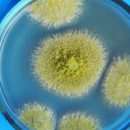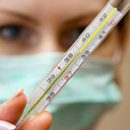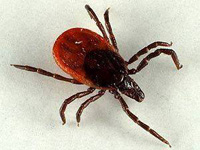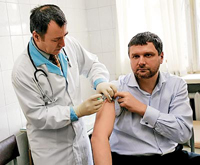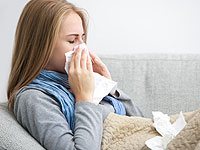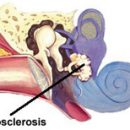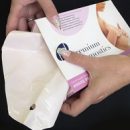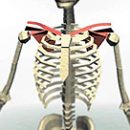Pseudotuberculosis is an acute infectious process, the causative agent of which is the bacterium family of intestinal sticks. The main symptoms of the disease are fever, lesions of the small intestine, the liver and the appearance of a scarlatine actuator.
Content
The concept of pseudotuberculese
Pseudotuberculosis - acute infectious disease characterized by fever, general intoxication, lesion of the small intestine, liver, often scarlatin-like rasub.
Pseudotuberculosis pathogens belong to the family of intestinal bacteria. In its properties, this bacterium has similarities with the pathogens of plague and intestinal heersiniosis. Bacteria is found in soil, water, isolated from the body of many species of animals. However, the main sources of infection are rodents. A person, as a rule, is not a source of infection. Pseudotuberculosis bacteria are well preserved in the external environment, in particular, on products (up to 3 months). Quickly die when heated.
The main way of spreading pseudo-tuberculosis - food. The greatest danger is winter storage products (potatoes, cabbage, carrots, etc.), which could be infected with rodents, dairy products used in food without prior heat treatment, as well as water when used from open reservoirs. Pseudotubreceze is found in all age groups, but more often in children of the first years of life.
Symptoms of the disease
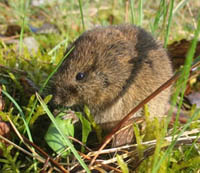 The disease begins acutely, chills appear, fever, an increase in body temperature to 38-38.5?With, symptoms of general intoxication, in the first days of the disease there may be symptoms of Qatar of the upper respiratory tract. Patients are bothering headaches, weakness, muscle pain and joints. Simultaneously with intoxication syndrome, nausea occurs, part of patients - vomiting, stomach pain, which wear a grapple-shaped or constant character. Localization of pain - in the poverty area, around the navel, right at the bottom of the abdomen, sometimes in the right hypochondrium. Liquid chair, viscous, with a sharp smell. In some patients, an admixture of mucus, less often, is detected in the colon process in the stool. Chair frequency from 2-3 to 15 times a day. Duration of the disease from 2 to 15 days.
The disease begins acutely, chills appear, fever, an increase in body temperature to 38-38.5?With, symptoms of general intoxication, in the first days of the disease there may be symptoms of Qatar of the upper respiratory tract. Patients are bothering headaches, weakness, muscle pain and joints. Simultaneously with intoxication syndrome, nausea occurs, part of patients - vomiting, stomach pain, which wear a grapple-shaped or constant character. Localization of pain - in the poverty area, around the navel, right at the bottom of the abdomen, sometimes in the right hypochondrium. Liquid chair, viscous, with a sharp smell. In some patients, an admixture of mucus, less often, is detected in the colon process in the stool. Chair frequency from 2-3 to 15 times a day. Duration of the disease from 2 to 15 days.
The cardinal signs of this disease include a sign «Hoodie» (Face Redness and Neck), «Gloves» and «socks» (limited redness of the brushes and stop). These signs appear most often on the 2nd day of the disease. The duration of the rash - 1-7 days. After its disappearance, since the second week of the disease, the majority of patients appear a seven-shaped peeling of the skin of the body, faces and neck and lamellar (sheet) - skin of palms and stop.
Often the language of the patient, covered in the first days of the disease with a white bloom, to the 5-7th day cleared and becomes «Malinov», What strengthens the similarity of pseudotuberculosis with scarletina (scarlantine-like forms).
Diagnosis and treatment of disease
In addition to the main symptoms of the disease, specific diagnostic methods are used to confirm the diagnosis - bacteriological and serological.
Basic materials for bacteriological research serve feces, blood, cerebrospinal fluid, lymph nodes and a worm-shaped process. To determine the presence of pseudo-tuberculosis antigens in feces and other material uses an immunoassay analysis.
Antibiotics (Levomycetin, Tetracycline or Streptomycin), Sulfanimamides and Chemotheraparations are used to treat pseudotuberculosis. Levomycetin is prescribed 0.5 g 4 times a day for 10-14 days. In symptoms of pronounced intoxication, an intravenous infusion of 5% solution of glucose or hemodesa is prescribed.
The duration of treatment depends on the form of the disease. Mode in the midst of the disease bed. Sometimes the testimony requires operational treatment. Patients discharge from the hospital after complete clinical recovery and double negative bacteriological research of feces.
The prevention of the disease is to control the state of vegetable stores, combating rodents, as well as observance of sanitary and hygienic activities in food enterprises and food, compliance with the rules for transportation, storage, preparation and sale of food products, prohibition of the use of vegetables (cabbage, carrots) without thermal processing, Standing sanitary supervision of water supply. Vaccines, i.e. vaccinations, no pseudotuberculosis.

